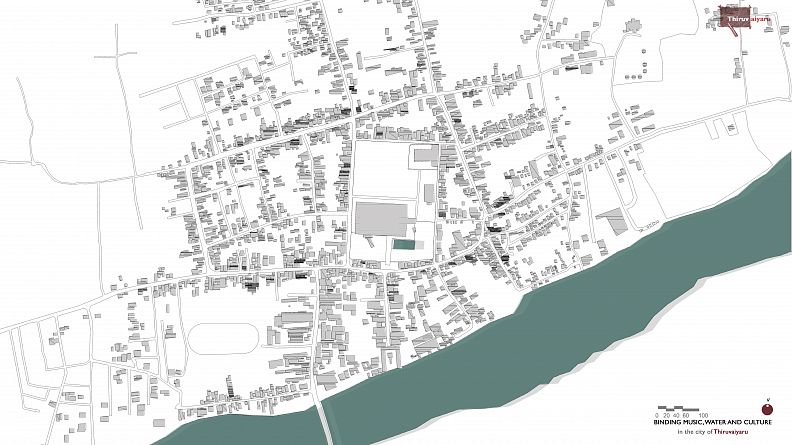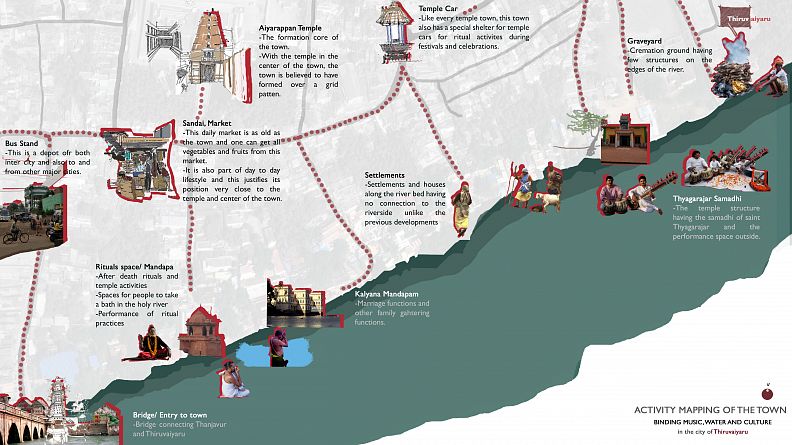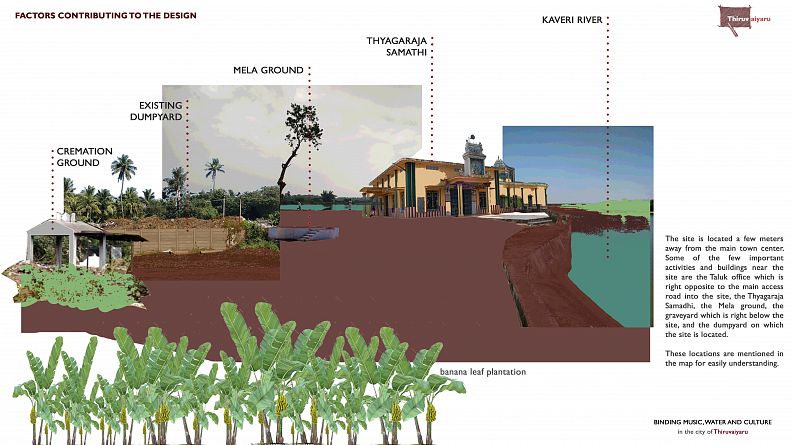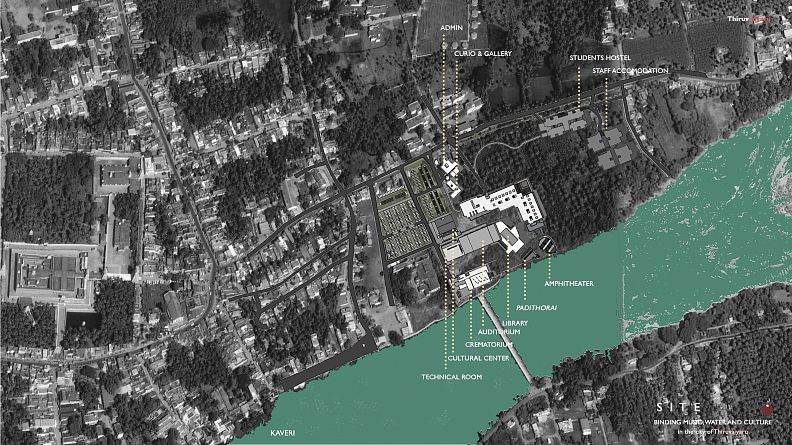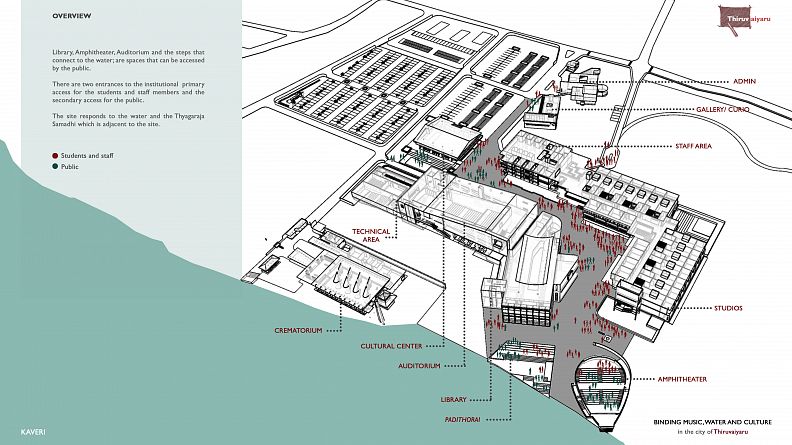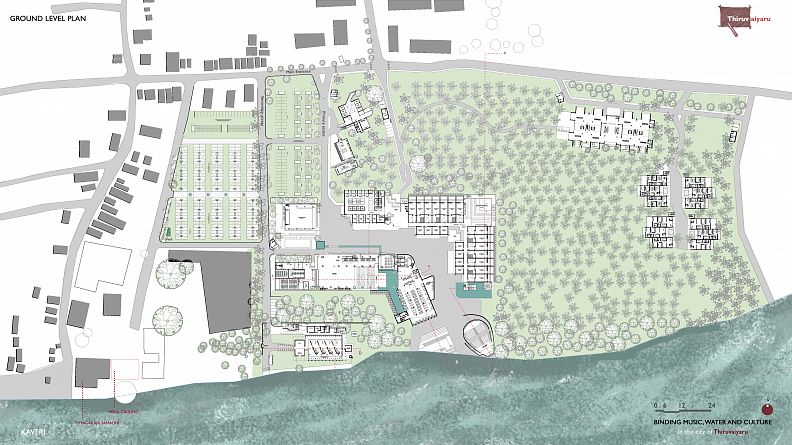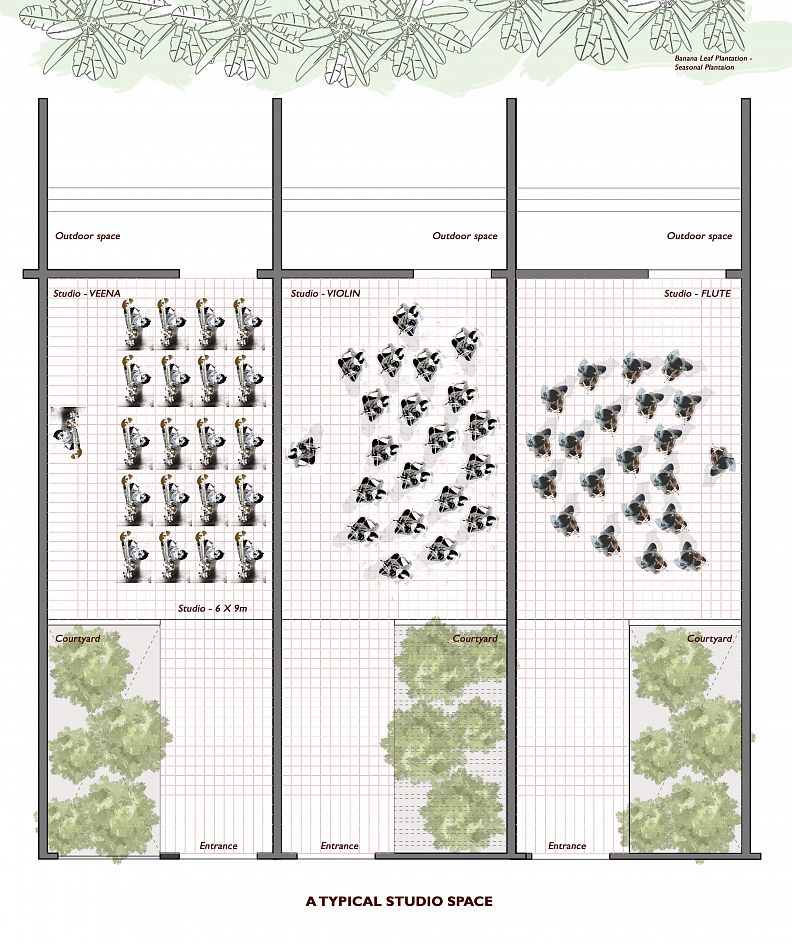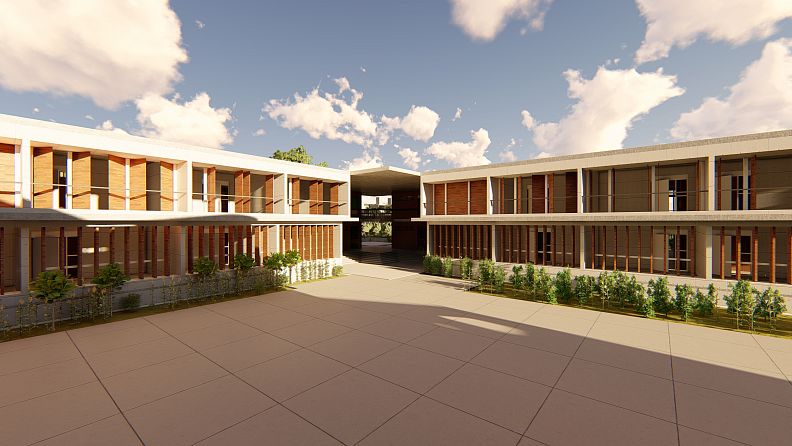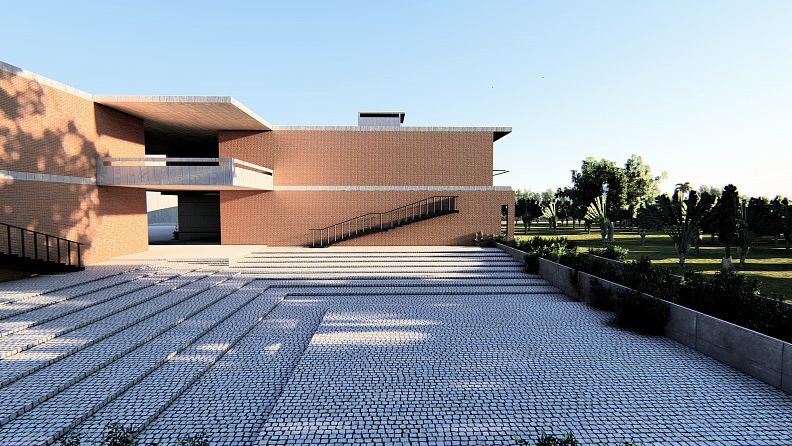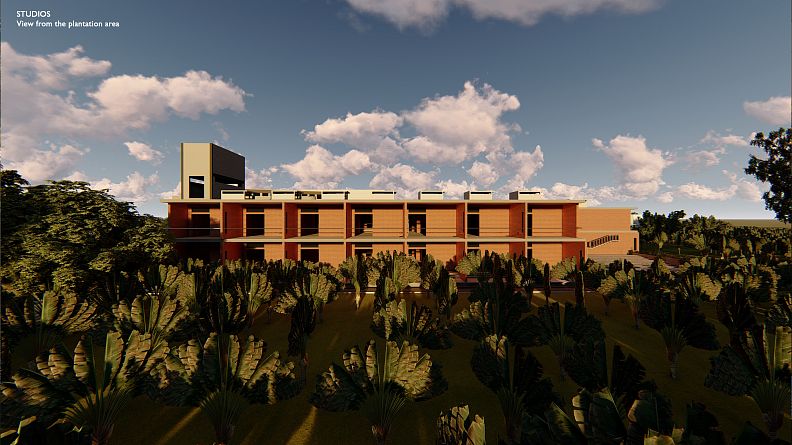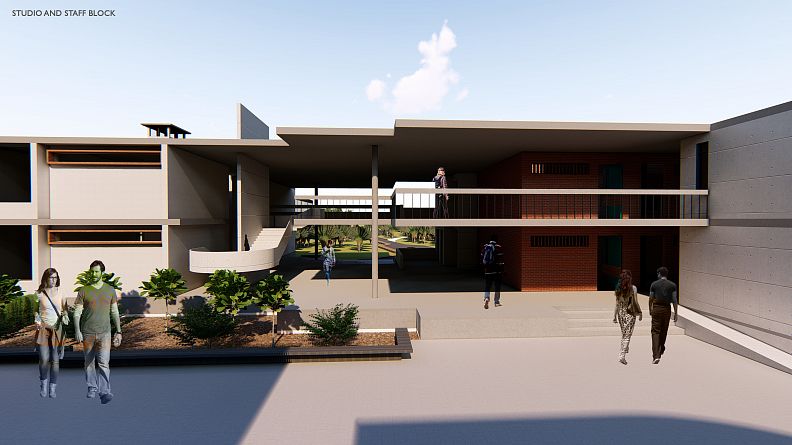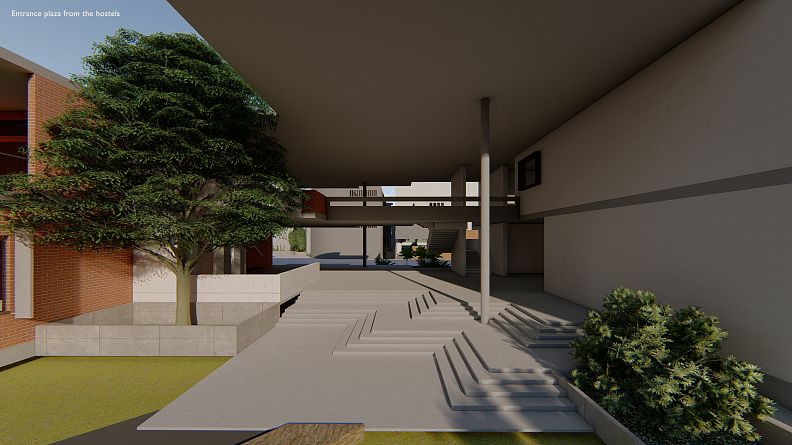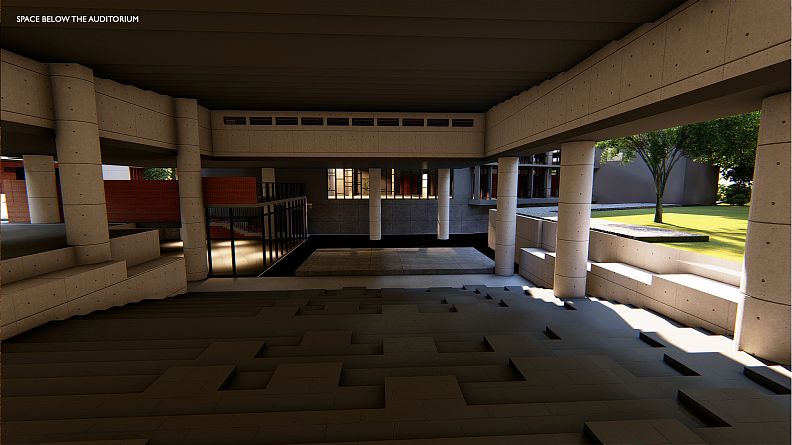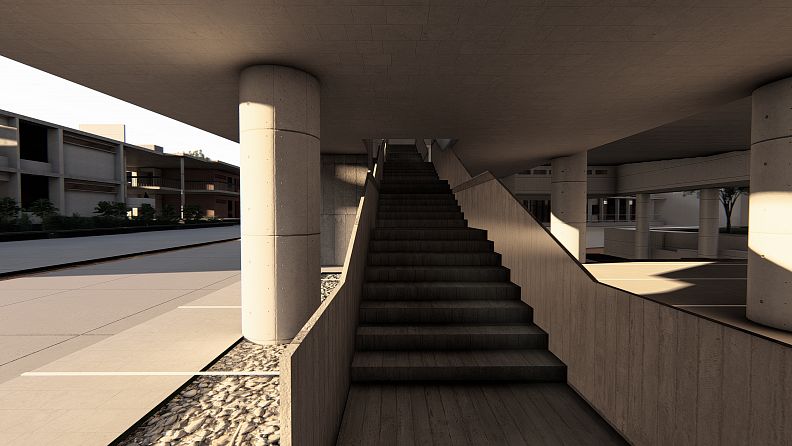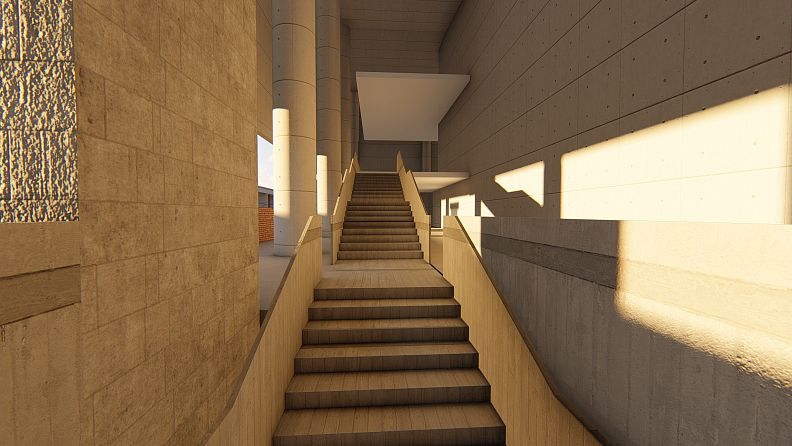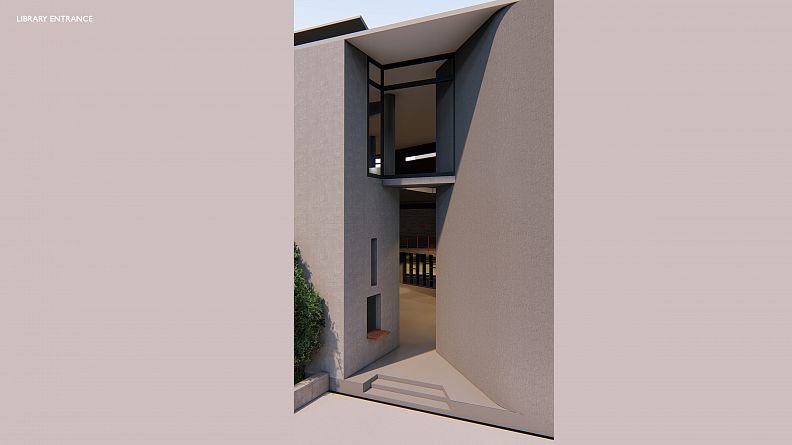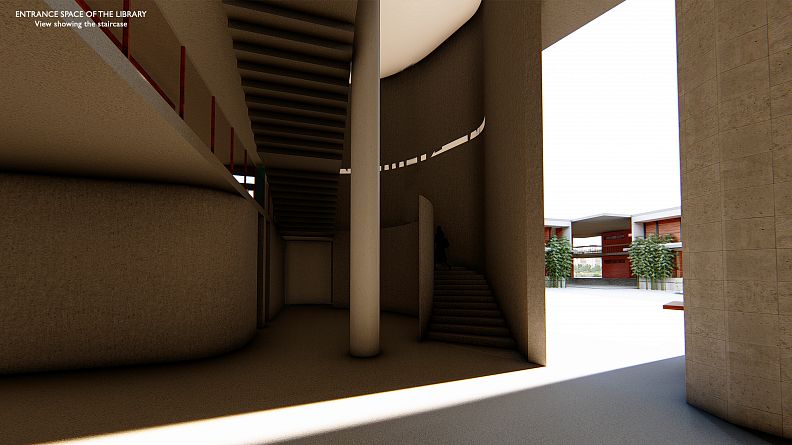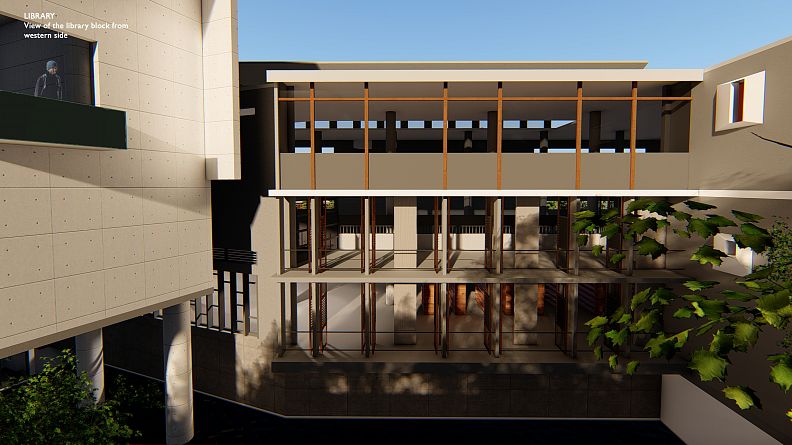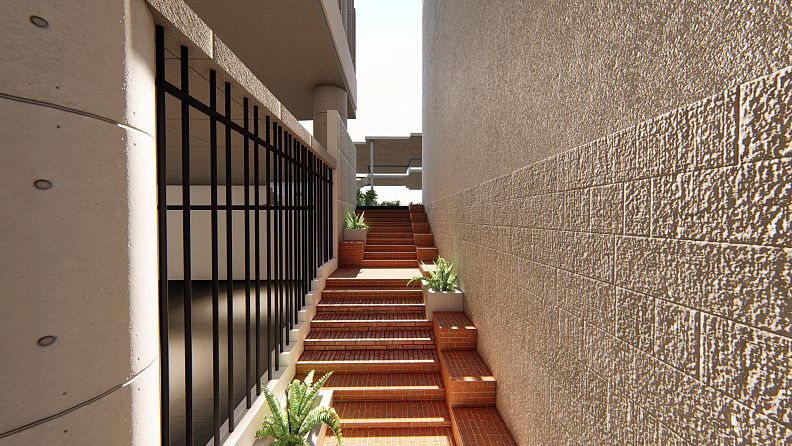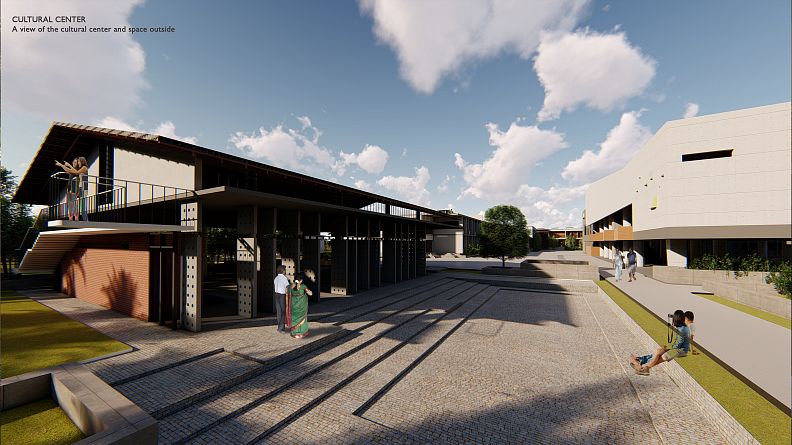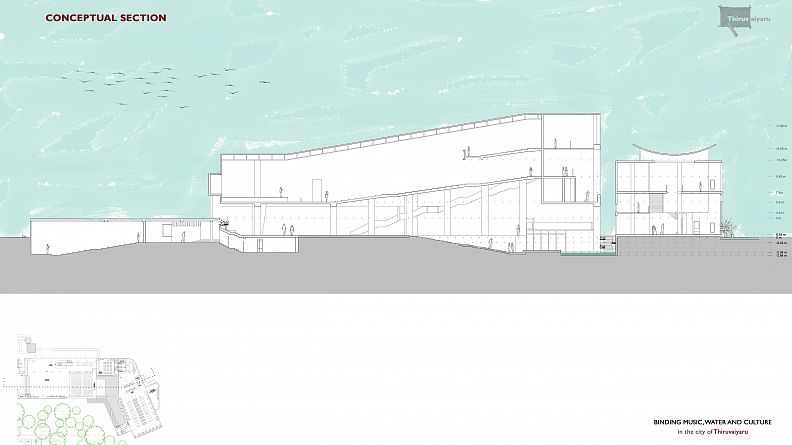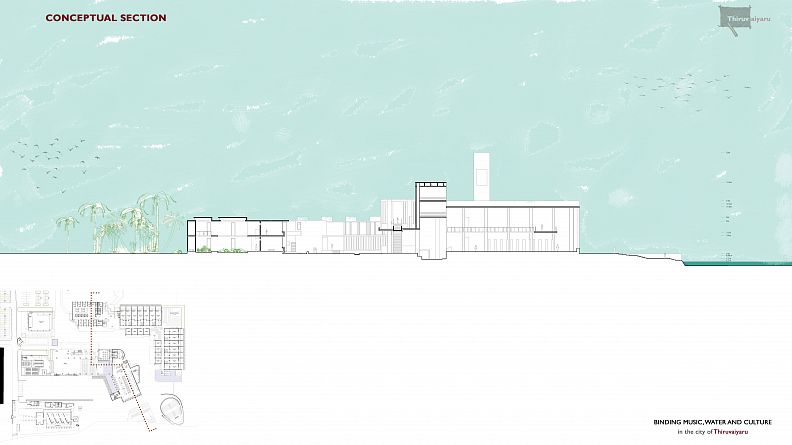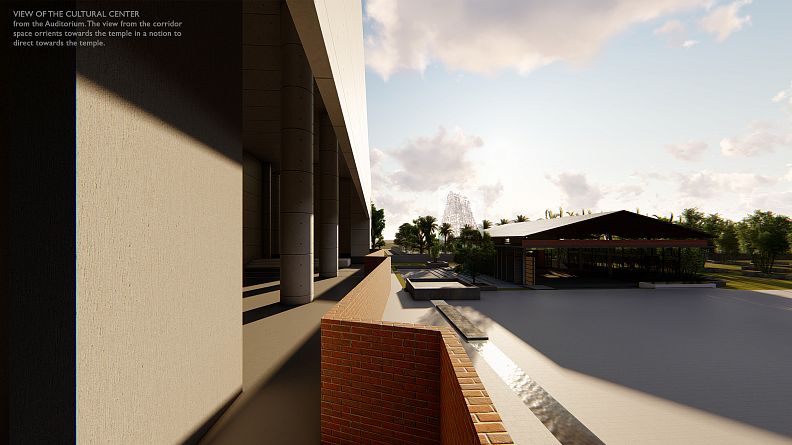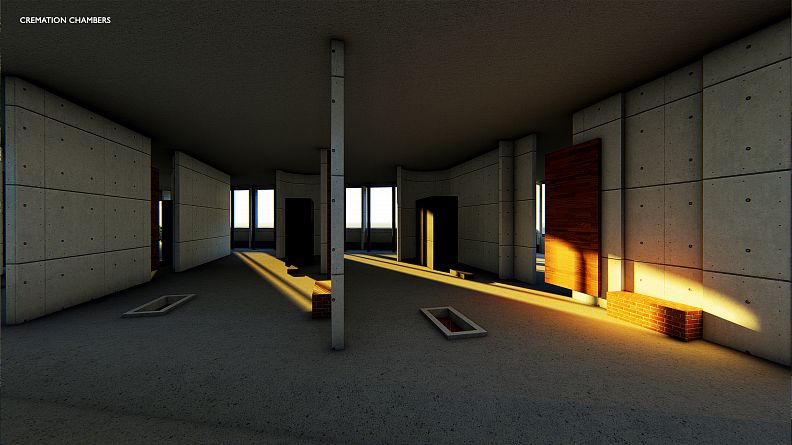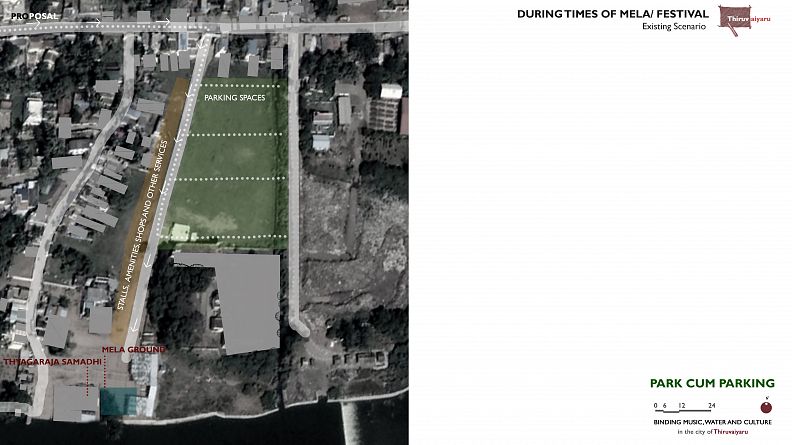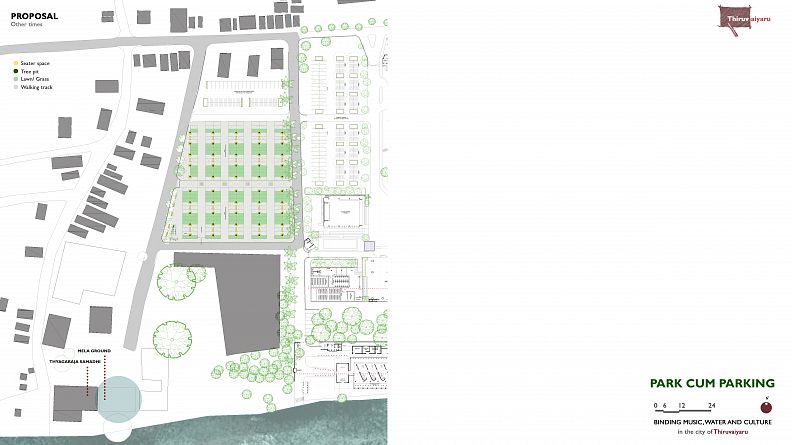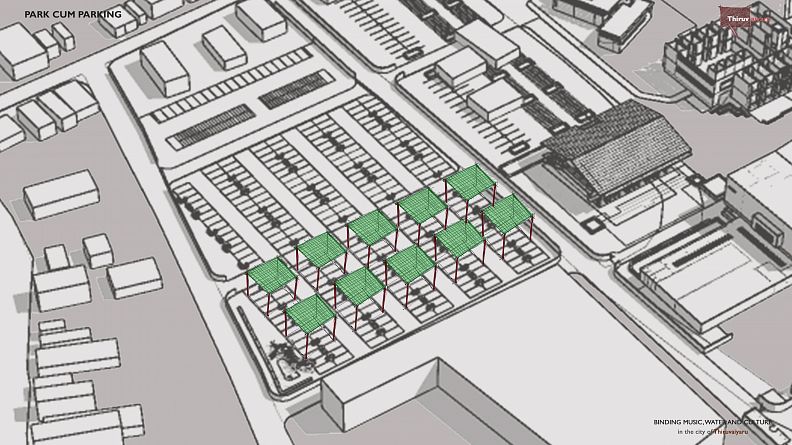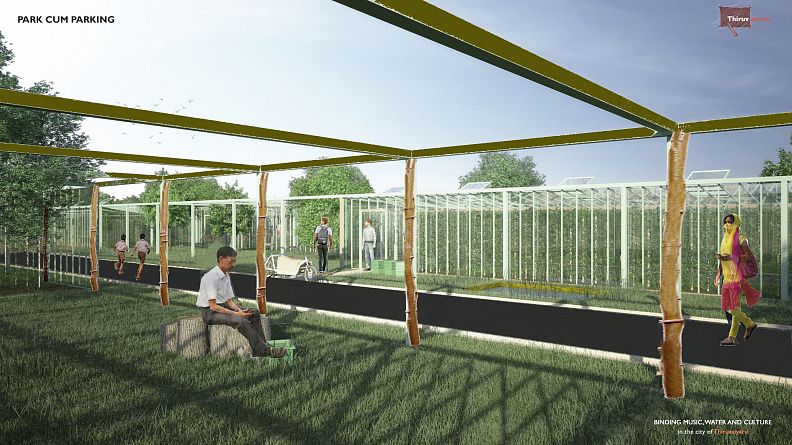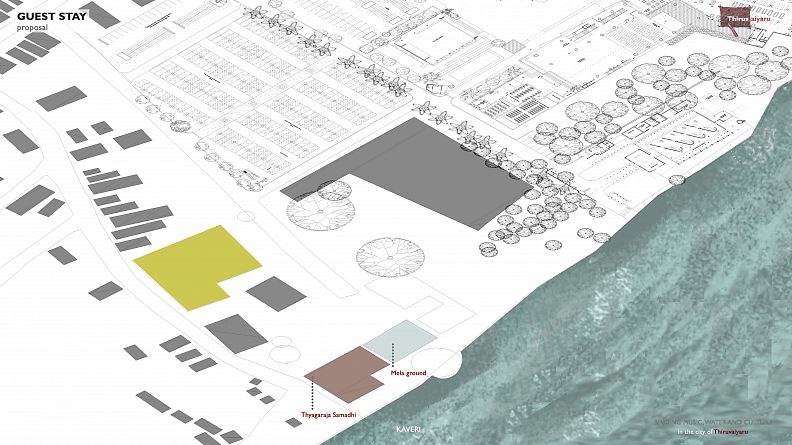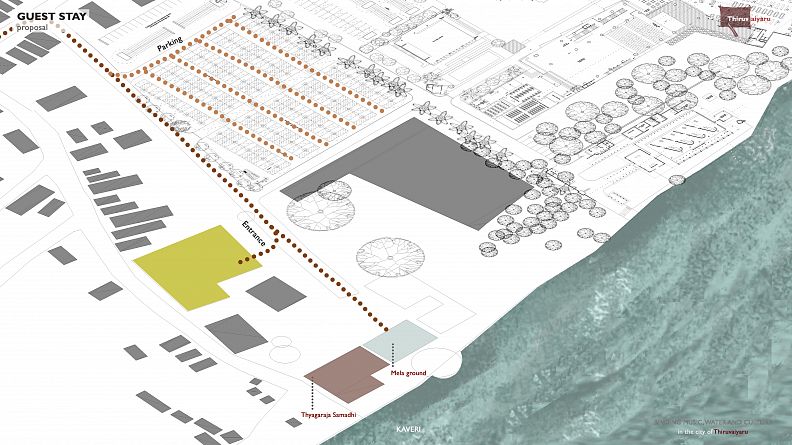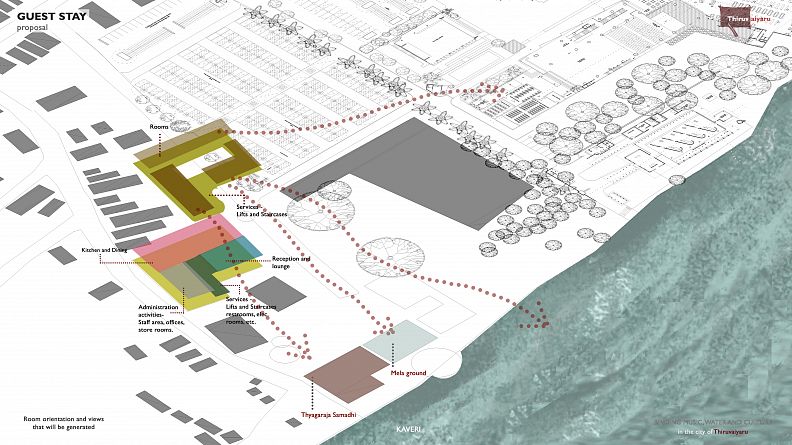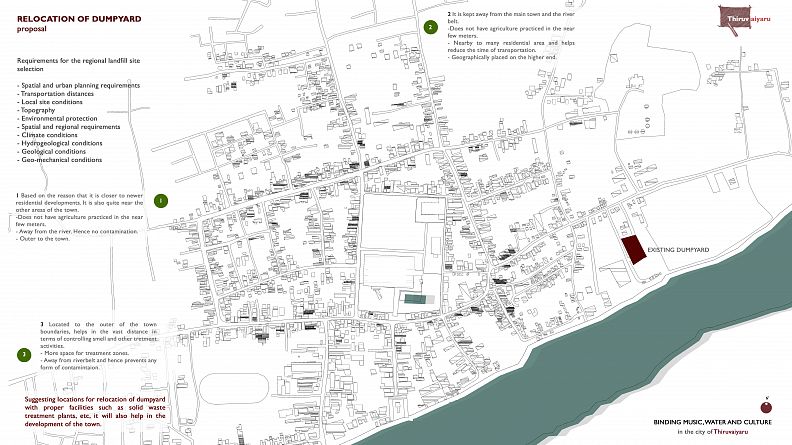Binding Music, Water and Culture - in the town of Thiruvaiyaru

Project idea
A small town to the north of Thanjavur is the town of Thiruvaiyaru which is majorly known for its Shiva temple and Saint Thyagaraja. Thyagaraja Aradhanai is a festival that is primarily observed in this town where the saint attained Samadhi (a sacred grave). A town which could be referred as the Capital of Carnatic Music (classical Music in Southern India), lacks infrastructure that could accommodate music festivals that the town is known to hold. The town is expected to receive about one third their population every year during their annual celebration festival. Developing their infrastructure will boost their economy and tourism.
This thesis will deal with the findings of how to give back to the saint and the town and to create more infrastructure where a lot of people could come together to celebrate the richness of the town. The entirety of this project deals with five basic subjects: Music, Temple, Water, a sacred grave, a graveyard and their relationships. The center of it is provision for Architecture for music training to enhance the worship. A sacred grave versus the graveyard for the common public are in near proximity to each other which when compared, contrasts itself. The intent is to bridge these elements and create relationships in a way that fits the town.
The relationship between the water, the agricultural land, all seem very important to attend to. There has to be a clear connecting which will be established between the temple, the samadhi, the festive ground and the temple.
Project description
A music school which is the primary intent of the project is designed to have studio spaces for various kinds of Indian Instruments, auditorium and other informal performance spaces, cafeteria and staff areas. It will also have spaces that are welcomed and accessed by Public inside the institutional zone, such as - the amphitheater space, which partially sits half over land and the other half over the river; and the cultural center where town activities and public zones are entertained.
The location of the site has river Kaveri on one of its edge and the other side with seasonal plantation lands. There is an illegal dumpyard adjacent to the Samadhi (the holy grave of the Saint) The project is focused on clearing that illegal dumpyard and transforming that space that could be used for the public recreational activity. The site for the Music school sits partially In this zone.
Along with the dumpyard comes the decades old cremation ground where there has been cremation activities over the past years. But the kind of facilities or infrastructure there is very contrasting to the one the sacred grave gets. The cremation activities are done out in the open and do not have any form of solid structure. Hence, redesigning the crematorium became part of the project. Redesigning of the cremation ground with the existing site features and based on the existing need for the number of facilities.
The project also focuses on creating temporary recreational opportunities - park in the morning and parking by night (park cum parking). A town with no form of recreational space will see its first park cum parking space, very near to the temple, the river and to the music school.
Creating accommodation facilities especially during times of the festival seems very crucial, as a very huge crowd is expected to flock into the town and leave without having provided these facilities.
The music school sits partially on a cleared dumpyard, which is attempting to establish a connection towards the sacred Samadhi, creates an association with the river and also takes into account of the times when water is not there, not damaging the agricultural practices nearby and also providing the farm workers to have a decent structure for their families to have an accommodation along with the staff and student stay.
Finally there is a proposal for the relocation of the illegal dumpyard to a new location based on a certain set of parameters.
Technical information
The initial zoning aimed at the connecting the river with the academic zones so as to continue the language of the town in terms of how it touches the river and lets people access the water.
It also treats the public and private access differently for different occasions. It categories and splits the spaces on basis of these accesses.
The studios are arranged on the north eastern quadrant of the site so it stays away from all other distractive elements such as the auditorium, the cafe, the riverfront activities, etc.
The open air theater is placed near the water body so the performances can happen near the river and at other times be used to connect to the water through its access.
The idea was to bring in public and also let them use certain parts of the institution- such as the library, the amphitheater, the technical rooms and the auditorium. The town can rent spaces out such as the auditorium if they need such a space for conducting or holding any functions for such a scale.
Co-authors
None
